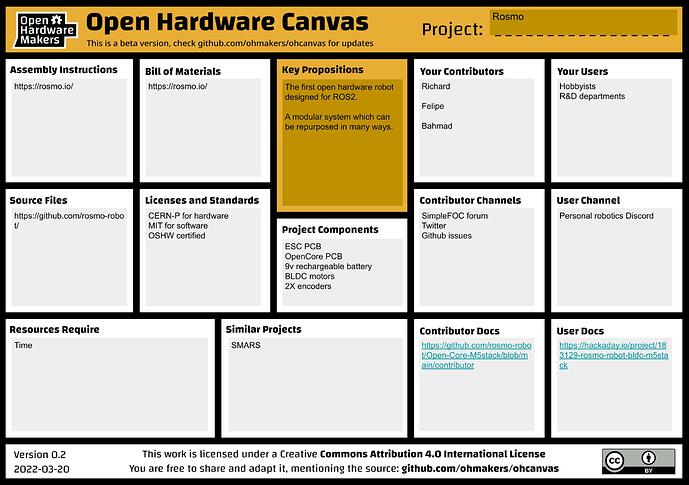Chip shortage is a proper issue. What’s the point of a robot no one can make? A possible solution is using a new (untested) RPI2040 board. Would require some significant re-work to the chassis, and changes the concept somewhat from being a stackable system.
It seems like it might be worth it to remain relevant. If moving away from stacking do we also move to a feather format instead of M5stack?
How do you define open hardware?
Hardware which can be produced and edited using FOSS software tools, which is sufficiently documented to enable others to build and adapt it. With a license that enables this
How have you changed as a team member and person over the course of your project? By following this curriculum?
More attention to detail when dealing with prototyping, minor errors can be costly in hardware.
What have you learned?
People are the biggest asset in a volunteer project. Be clear, especially when things change due to outside factors.
What do you struggle with in leading and working in the open? What do you struggle with in the curriculum?
In order to get people excited enough to work on something, you have to make claims/have hope. When circumstances change you need to articulate the changed circumstances clearly.
What surprised you the most?
The implosion of semiconductor supply chains.
What seemed easiest?
Tweeting pretty pictures of PCB’s
What seemed most difficult?
Sorting out the detail of getting those PCB’s manufactured
What are your most important takeaways or lessons learned?
Choices of the platform. Choice of Free software tooling.
It’s important to have a vision, in our case: ‘capable robot made of stackable modular parts’ but don’t hold on to that when it’s no longer possible. Adapt to the new circumstances.
What would you do differently if you could begin again? What will you do differently in your next project?
Adapt earlier to use the best available components, rather than hold too tight to the original vision.
Next 12 weeks
Hands-on with the new driver board.
Celebration of V1 - Post on Hackaday.
Post on component shortage.
Announce V2.
Linorobot
